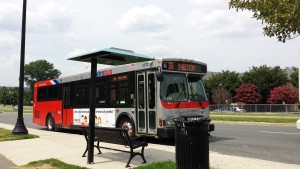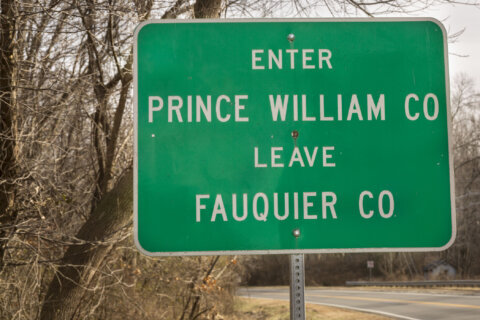WASHINGTON — Lower gas prices may be good for drivers’ wallets, but some local leaders warn the lower gas taxes collected on cheaper gas could cut into local transportation services and put more cars on the road.
At a meeting last week of the Potomac and Rappahannock Transportation Commission (PRTC) board, a presentation projected a $7 million shortfall in the next budget year, and $9 million annual shortfalls for Prince William County in following years after budget reserves run out.
The staff suggested asking the General Assembly to implement a floor on the 2.1 percent motor fuels tax that funds transit the same way Virginia has implemented a floor on the statewide gas tax that has provided millions in new funding for road projects. Since the tax is a percentage of the cost of the gasoline, it can rise with inflation, but it can also be unpredictable as prices fluctuate.
Prince William County Supervisor Marty Nohe (Coles), who also chairs the Northern Virginia Transportation Authority, says the prolonged decline in gas prices from the peak a few years ago will likely have to lead to some service cuts, along with a boost in the amount of general tax dollars to help fund the system.
“The unfortunate downside of lower gas prices is that the gas tax revenue is down as well, so there’s a lot less money available to pay for transit,” he says.
“Local governments throughout the region are going to have to consider ways to fill that gap, and that means that transit services which normally are funded with a special stream of revenue now are going to be competing against other core government services in order to be able to get full funding, and in all the jurisdictions, including Prince William County, that’s going to create some budgetary struggles,” he adds.

He predicts this could be one of the top issues in the debate over the next county budget.
PRTC operates OmniRide commuter buses and OmniLink local bus routes.
“We’re going to have to figure out which ones of those may be less important than others, so that we can provide some relief to this budget gap by having a reduction in service,” Nohe says.
Even a 73 percent cut in service, projected to push about 7,500 riders off the buses, would still leave a $900,000 projected gap in fiscal year 2017 and a $2.9 million gap in fiscal year 2018.
“One of the things we’ve become very aware of is the fact that Prince William County is experiencing a big chunk of our population growth in the two demographic groups that rely most heavily on transit, and that’s millennials, who are increasingly choosing not to own a car, or choosing at least to own fewer cars than they have licensed drivers in the household, and then seniors, who are trying to become less reliant on cars as they get older, and become more dependent on a local bus service to be able to get them around town, get them to the grocery store,” Nohe says.
“Therefore, we’re seeing an increase in demand in bus service right at the time when it’s becoming most difficult to afford that bus service,” he adds.
Nohe says the county has to plan in the long-term for ways to cover the bus service that is increasingly in demand, even if gas prices remain where they are today.
“To look at other forms of taxation in order to fill the gap requires a cultural shift that will need a lot of community input to determine to what degree people are willing to absorb that through either increased taxes or the reduction of other services that will free up funds to back-fill the transit gap,” Nohe says.
The Northern Virginia Transportation Authority cannot step in to help the counties cover bus operations because of legal restrictions on the money earmarked for Northern Virginia.
“We can spend money on capital projects, the purchase of new buses the building of new train facilities, but we’re not allowed to spend any of the regional transportation congestion relief funds on maintenance or operating of existing transit systems because the idea was that we’re supposed to grow the system, not simply maintain the status quo,” Nohe explains.
PRTC is hoping to change that.
“Transit is an important part of relieving congestion throughout the region, but we have to make sure that we spend the money that we have in the way in which the law allows us to do so, and because the NVTA funds are limited to the expenditures on capital projects, we’re going to have to look to other sources in order to find funds to pay for the maintenance and operating which is where we face a challenge right now,” he says.
The PRTC presentation indicates that any major cost cutting moves would lead to the loss of a large number of riders who would either have no way to get around, or who would be forced to drive, adding to traffic on the roads. The commission has budgeted for fare hikes of about 7.5 percent every other year, and is also concerned it could lose $800,000 in annual federal funding.







